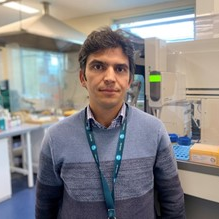Carbon Capture, Storage and Utilization: From a Sustainability Perspective
A special issue of Sustainability (ISSN 2071-1050). This special issue belongs to the section "Sustainable Engineering and Science".
Deadline for manuscript submissions: closed (25 January 2024) | Viewed by 5097
Special Issue Editors
Interests: carbon capture, storage, and utilization (CCUS); mineral carbonation; carbonate product development; green building materials
Special Issues, Collections and Topics in MDPI journals
Special Issue Information
Dear Colleagues,
To keep the rate of global warming below around 1.5 to 2 °C, annual removal of more than ten gigatons of CO2 from the air is required by the middle of the century. Common carbon-capture technologies offer the promise of turning back the clock on climate change by removing carbon dioxide from the atmosphere and preventing further emissions. Capturing CO2 before it is emitted or removing it from the air is the first step in this process, and the next important step is to find ways to store and preferably utilize this large volume of gas. Carbon capture, storage, and utilization (CCSU) is critical for meeting climate goals and urgently reaching net-zero emissions. As improbable as it may seem, we have had technology to offset industrial emissions for nearly 50 years. However, there has not been enough incentive to use the technology. Driven by the current industry demand to decarbonize, we have witnessed a significant increase in the level of investment in CCUS technologies. Some of the existing technologies face a range of technical, environmental, and economic challenges. To tackle the climate change crisis, it is necesary to overcome these challenges and make improvements toward cost-effective, rapid, and large-scale CO2 sequestrations. This promotes research on new methods and novel technologies.
In line with the large demand, research and innovation in this field are expanding at a rapid rate, and we in the journal of Sustainability are committed to facilitating the communication of high-quality studies in this field. In this Special Issue, original research articles and reviews are welcome. Research areas may include (but are not limited to) the following:
- Advances in carbon capture and storage technologies;
- Advances in CO2 utilization;
- Technology assessment: economic, environmental, and social;
- Techno-economic feasibility and life-cycle analysis evaluation of CCUS;
- Sustainable carbon capture;
- Direct air capture technology;
- The biological utilisation of CO2 in value-added products;
- Advances in low emission technologies.
We would strongly encourage the submission of innovative solutions for the integration of CCUS in the hard-to-abate industry sectors such as cement and steel as these two combined emit the largest portion of greenhouse gases to the environment. Furthermore, comparative studies on the techno-economics of the CCUS integrated steel production and green steelmaking are regarded highly in this Special Issue. We look forward to receiving your contributions.
Dr. Faezeh Farhang
Dr. Ali Kiani
Guest Editors
Manuscript Submission Information
Manuscripts should be submitted online at www.mdpi.com by registering and logging in to this website. Once you are registered, click here to go to the submission form. Manuscripts can be submitted until the deadline. All submissions that pass pre-check are peer-reviewed. Accepted papers will be published continuously in the journal (as soon as accepted) and will be listed together on the special issue website. Research articles, review articles as well as short communications are invited. For planned papers, a title and short abstract (about 100 words) can be sent to the Editorial Office for announcement on this website.
Submitted manuscripts should not have been published previously, nor be under consideration for publication elsewhere (except conference proceedings papers). All manuscripts are thoroughly refereed through a single-blind peer-review process. A guide for authors and other relevant information for submission of manuscripts is available on the Instructions for Authors page. Sustainability is an international peer-reviewed open access semimonthly journal published by MDPI.
Please visit the Instructions for Authors page before submitting a manuscript. The Article Processing Charge (APC) for publication in this open access journal is 2400 CHF (Swiss Francs). Submitted papers should be well formatted and use good English. Authors may use MDPI's English editing service prior to publication or during author revisions.
Keywords
- carbon capture, storage, and utilization (CCUS)
- direct air capture
- hard-to-abate sectors
- decarbonization






